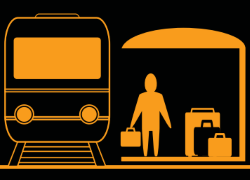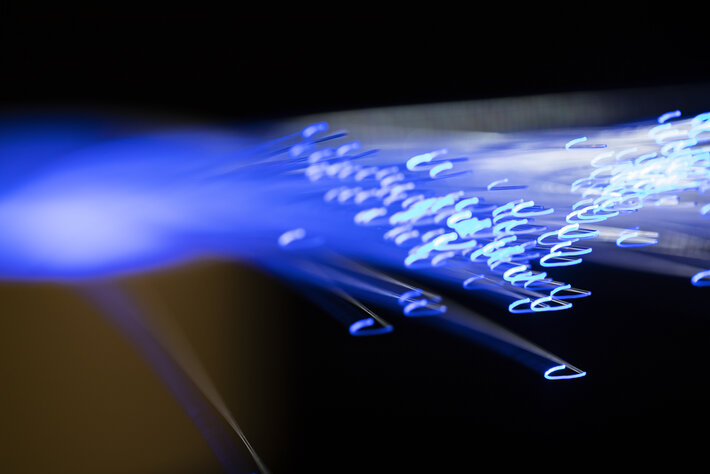The IoT platform landscape could resemble a university course for the richness and diversity of the offer, writes Saverio Romeo. If the adopter wants to pass the exam by selecting the right platform, a great deal of study may be necessary. Here, we do not want to cover the entire landscape, but we do want to give some suggestions for starting that study journey. That journey strongly depends on the requirements and the context, but there are some themes and features worth highlighting that are common parts of the decision-making process.
The subject of connectivity is receiving renewed focus at present. This is due to the increasing interest in low power wide area network (LPWAN) technologies, the advent to 5G cellular, and growing acceptance in the market that connectivity is often still a challenge to get right. As a result, platforms with a strong focus on connectivity features are in the spotlight. Those come from well-known mobile network operators like AT&T, with its AT&T IoT Platform, and Vodafone, but also managed IoT services providers or IoT mobile virtual network operators (MVNOs) such as Stream Technologies, with its IoT-X platform.
The world of LPWAN is also gathering attention, with platforms like Actility’s ThingPark. There are then companies historically involved in mobile communications such as Nokia, with its IMPACT (Intelligent Management Platform for all Connected Things) platform that has a strong focus on connectivity, but also looks at other layers in the stack such as analytics and application development.

Saverio Romeo, is
principal analyst at
Beecham Research
Climbing the stack towards device management, we find dedicated platforms to device management such as Wind River’s Helix. Continuing further up the stack, dynamic companies such as Cumulocity – recently acquired by Software AG – are focusing on analytics and application enablement services with a strong focus on integration with third parties and ecosystem formation. The analytics and application development layers have different offers based on different factors such as extension of analytics features and engagement with developers through a clear open softwarebased approach. At these layers, IBM, with its Watson IoT unit, is a strong market player setting the trends in emerging areas such as machine learning and artificial intelligence. On the analytics side, Hitachi with Lumada is another interesting case, building on the deep industrial operation technology knowhow of Hitachi and combining with superb analytics capabilities gathered through acquisitions such as Pentaho.
There are then companies that could be labelled as vertical centric, but that have the clear intention to expand their vertical footprints. Bosch with its IoT Suite is a case in point. Although originally a mobility components producer, Bosch has advanced quickly into the area of software and has recently shown strong potential for the smart cities, smart home and smart transportation areas, with a high level of focus in the IoT and artificial intelligence capabilities. Bosch seems to be leaving behind its traditional culture as a ‘manufacturing everything’ company and starting to be open to collaborations and partnerships. Among the most interesting signs is its recent-announced partnership with Amazon Web Services (AWS).
Another established player such as PTCThingWorx is moving from an almost solely industrial focus towards other verticals such as retail. PTC-ThingWorx is getting great attention on the use of virtual reality (VR) and emerging concepts such as digital twins.
However, the IoT platform landscape is not only made of large enterprises and established players. The innovative contribution coming from small and medium-sized companies and start-ups continue to feed the space with ideas.
Companies formed in the dynamic Irish tech start-up scene have managed to scale up fast in the highly competitive environment of Industrial IoT. EpiSensor, originally an IoT equipment company, has forged a very strong partnership with Asavie, another Irish IoT company which is focused on secure connectivity management, and Dell, which adds its IoT Gateway to the overall solution.
Waylay of Belgium puts great emphasis on the key topic of data orchestration and integration. myDevices with Cayenne tries to make IoT solution development easy and rapid. Carriots, from Spain, wants to simplify IoT solution development with a step-by-step approach flexible enough to work in several different sectors. Arrayent aims at the brands and the consumer IoT space. There are then companies vertical focused in specific areas of manufacturing (such as Wi-Next), on the Industrial Internet widely (CloudPlugs), smart city projects (LivingPlanIT), and smart agrifood solutions (Yodiwo).
The sheer variety and scope of activities that IoT platform providers are engaging in demonstrates a vibrant market which provides a sometimes bewildering array of choices to potential customers. Passing the exam of selecting the right platform for your project will certainly require an amount of homework to be completed before a fully-informed decision can be made. The good new is that there is almost certainly an ideal solution out there for you.










